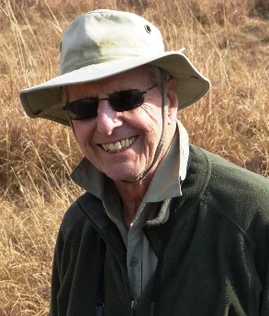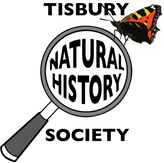|
Please note that the list is now closed for this field trip.
On 20th April we had our final evening talk given by Simon Martyn with photos provided by his wife Mandy.
Simon was the European Director of Earthwatch, an International NGO which started out in Boston, USA over 50 years ago but is now worldwide with offices in Australia, UK, India and Japan. Earthwatch sets up projects both for Wildlife and Archaeology with scientists running the projects, helped by a workforce of volunteers. They carry out research and provide essential statistics to establish conservation schemes for threatened species or habitats as they work alongside local people. The talk was ‘Glimpses of Wildlife Behaviour’ and was divided into sections. Firstly, we were shown various habitats and their wildlife such as the much depleted herds of bison in Yellowstone Park, the plains of Africa with the wildebeests and various antelopes, plus the harsh, freezing environment of the Arctic. Secondly, the emphasis was on territory and, especially during the breeding season. Male lions guarding their prides and fighting off the opposition were illustrated. We saw how Roe and Red deer will also become very aggressive fighting off other bucks and male tigers will kill another male tiger’s cubs in order to mate with the female and pass on his genes. We saw a grisly photo of this. (NB. Badgers also do this, as I can witness). The effects of climate change were visible in the photos of droughts in Africa, drying up the rivers and water holes, causing many animals to die and causing mayhem at the water points with competing animals. Thirdly, Simon showed us photos of how many species co-operate with others for the benefit of both. For instance, egrets and finches will hitch rides on buffaloes to eat the ticks and crocodiles will stir up the water and expose the fish for the storks on their backs. In India the Langhur monkeys work as lookouts for the Spotted deer when a tiger is about, shrieking in terror. Finally, we were treated to humorous photos of various animals and birds in compromising and amusing positions including a harassed mother Brown bear trying to control her three naughty cubs. One was up a tree, another near the river and the third heading up the mountain. It was an entertaining and illuminating evening with superb photography and a nice change from all things local. by Debbie Carter Andrew Graham has given us a richly detailed recounting of places to visit locally. On the new Local wildlife sites page, reached via the Resources tab on the menu and passing through Wildlife identification and recording, you will find separate sections on local woodlands, water habitats, grasslands and other places of interest.
Rabbits are renowned as prolific breeders. Females are fertile at 3-8 months old and have a gestation period of around a month. They give birth to a litter of 4-12 kits and may be ready to mate again the next day. This, combined with the fact that they can breed throughout the year, means that in the right conditions, populations can grow rapidly, hence the expression ‘breeding like rabbits’. This proved disastrous when 13 rabbits were introduced into Australia in the 19th century where, in the absence of suitable predators, they spread across the continent in 50 years, devastating crops and the natural environment alike. Rabbits, originally native to Iberia, spread around the continent in Antiquity and were introduced into the British Isles first by the Romans and then the Normans, as a source of meat and fur. In places, artificially built warrens were looked after by warreners, so landowners had a constant supply. Warren and coney (the old name for rabbits) crop up in numerous place names around the country as a result. Of course, rabbits are perfectly capable of making their own burrows, using their sharp claws to dig into the ground, often under sheltering scrub. From there they will venture out to feed. They have virtually 360% vision, as befits a prey species, and are always on the lookout for threats. Their white tail, or scut, provides a flashing warning sign to others when running for cover. A sizeable colony can have quite an impact on the grassland in vicinity of the burrows, creating a closely-cropped turf, benefiting mining bees and wasps as well as herbs that cannot compete in a longer sward. Rabbits provide food for a number of species that prey upon them, including stoats, buzzards, polecats and foxes. When we moved to Tisbury, we were struck by the absence of rabbits in the surrounding countryside. Although rabbit numbers have been increasing each spring, populations keep getting knocked back by autumn, perhaps due to diseases: myxomatosis and viral haemorrhagic disease. When the former was first introduced to this country in the 1950s, it wiped out most of the population, since then its impact has reduced but stays active. What impact the dearth of rabbits in this area has on the breeding success of its predators? I am afraid that for the immediate future, the rabbits we are most likely to see locally are the Easter Bunnies on Easter cards (how rabbits became associated with this is an entirely different question!). P.S. In Weymouth we were encouraged to use the term bunny in deference to Portland superstitions about use of the R word. I hope any readers from Portland have not been too traumatised by this article. by Andrew Graham [editor - with apologies for the late upload this month] Debbie Carter has given us some valuable assistance in listing out the wildflowers you may be able to spot locally across four habitat types (chalk downland, hay meadows, woodland and wetland). With Ordnance Survey grid references, this is an impressive guide, all beautifully illustrated with the wildflower photographs taken by Andrew Carter.
Please refer to the Resources part of the website to locate the growing number of Local Wildlife pages we're adding to the Wildlife identification and recording section. Inés has shared a fascinating insight into the use of an additional freezer kept at her home, with the purpose of aiding scientific investigation into the health of wildlife.
"I have recently been updating the inventory of my corpse freezer. This sounds a bit gory but I would like to explain that it is all for a good reason. Last year, a chest freezer became available locally on Freecycle.org and I decided to grab the opportunity and set up a freezer that would act as a local hub for the temporary storage of dead animal samples that can contribute to wildlife conservation and research. The current contents of my corpse freezer include a dead slow worm that I found on the road (but not flattened) a couple of weekends ago. I reported it on the website Garden Wildlife Health and on the Monday after, I received a call from ZSL vets, very interested in doing a post-mortem on my slow worm. I am just waiting for their pre-paid envelope to send it back to them. One of our members (thanks, Juney!) found a sparrowhawk in their garden, sadly deceased after having crashed against their window. This one is also in my freezer waiting for another dead bird of prey to be found, to fill the pre-paid box that I have from the (Predatory Bird Monitoring Scheme) before sending it. A few months ago I sent them two owls and when they finish their analysis they will let us know the results. Birds of prey often have symptoms of secondary poisoning or their body tissues contain concerning levels of toxic products, all due to the ingestion of prey items which have been poisoned (e.g., rat poison, slug pellets...). I also have a couple of otters that died in road collisions with cars, which I will deliver to the Cardiff Otter Project this summer. They will ascertain if the otters have any underlying health condition, their sex, their age, their breeding condition, and possibly do some DNA analysis too. The good news from this project is that populations of otters are slowly recovering nationwide from previous minimum numbers. However, their populations are not genetically diverse and are therefore vulnerable. In addition, background river pollution is also detectable in otter body tissues. Past contents of my corpse freezer include faecal/swab samples from mustelids that were sent to Nottingham University for research on COVID-19 transmission between humans and wild mammals (none tested positive) and bats that were sent to Defra for rabies testing (also negative). Other animals that are not required for any post-mortem research project, I may skeletonise for archaeological reference collections. It is sad to find dead animals, particularly when they have died because of us (humans). While some dead animals may be suitable to be left in the wild to serve as food for scavengers, sometimes it is better to remove the animal from the environment to prevent the spread of disease or contribute to the conservation of the species. The results from many of these analyses projects provide information on a wide range of elements that are useful for conservation research and have the potential to inform on policy (such as regulating the contents of pest-control products). If you are potentially interested in helping with this research, please have a look at our website section and scroll down to "Dead wildlife" (https://www.tisburynaturalhistory.com/recording.html) to find out what animals are interesting for sampling. Don't hesitate to get in touch if you encounter any animal samples that may be useful, the "corpse freezer" has some space!"  Once again we welcome Pete Thompson as our new President, with the addition of his biography on the About the Society page. Pete has a long history of dedication to the Society, having served on the committee for 35 years from 1983 to 2018 and as Chair for 27 years from 1991 to 2018. Peter Shallcross will be leading an extra field trip on Friday 23rd June to Ryewater Nursery, where the focus will be on butterflies, plus the varied habitats of this former nursery, which is now managed for conservation. Please see the details on our updated Field Trips document.
 At the last of our indoor events this year, we shall hear from Simon Martyn, a former Europe Director of Earthwatch, that, for anyone unfamiliar with it, is the international NGO founded over 50 years ago to connect people with scientists worldwide, conduct environmental research and empower them with the knowledge they need to help conserve the planet. In this talk, Simon will share with us, along with pictures taken by his wife, Mandy, some “Glimpses of Wildlife Behaviour” in many different species, gathered from their own travels across many different countries, over many years of living, working and conservation-related travel. The Victoria Hall, High Street, Tisbury and its bar, will be open as usual from 7:00 p.m (cash & card payments). Members and those under 21 have free entry and we welcome any visitors to join us and pay a guest fee of £2. Please contact us if you'd like a visitor ticket. Head over to the Field Trips page to download a document we've prepared about meeting places, distance, difficulty and footwear for all the main Field Trips this year. There's a wonderful line up of outings, both day and night, to experience the wildlife world of nightjars, otters, beavers, migratory birds, ancient trees...and the list goes on! The first one will be on Mon 1 May 2023 for a guided bird walk at Wallmead Farm with ecologist Nick Adams, starting at 5.30pm.
Please note that the Young Nature Watch Activities are listed on the main Calendar and details about them will be communicated on the YNW Blog and via email. |
Photo: Avocets (Izzy Fry)
The headers display photos taken by our members. Do get in touch via the Contact Form if you'd like to submit a photo for selection.
Archives
May 2024
Categories
All
|

 RSS Feed
RSS Feed